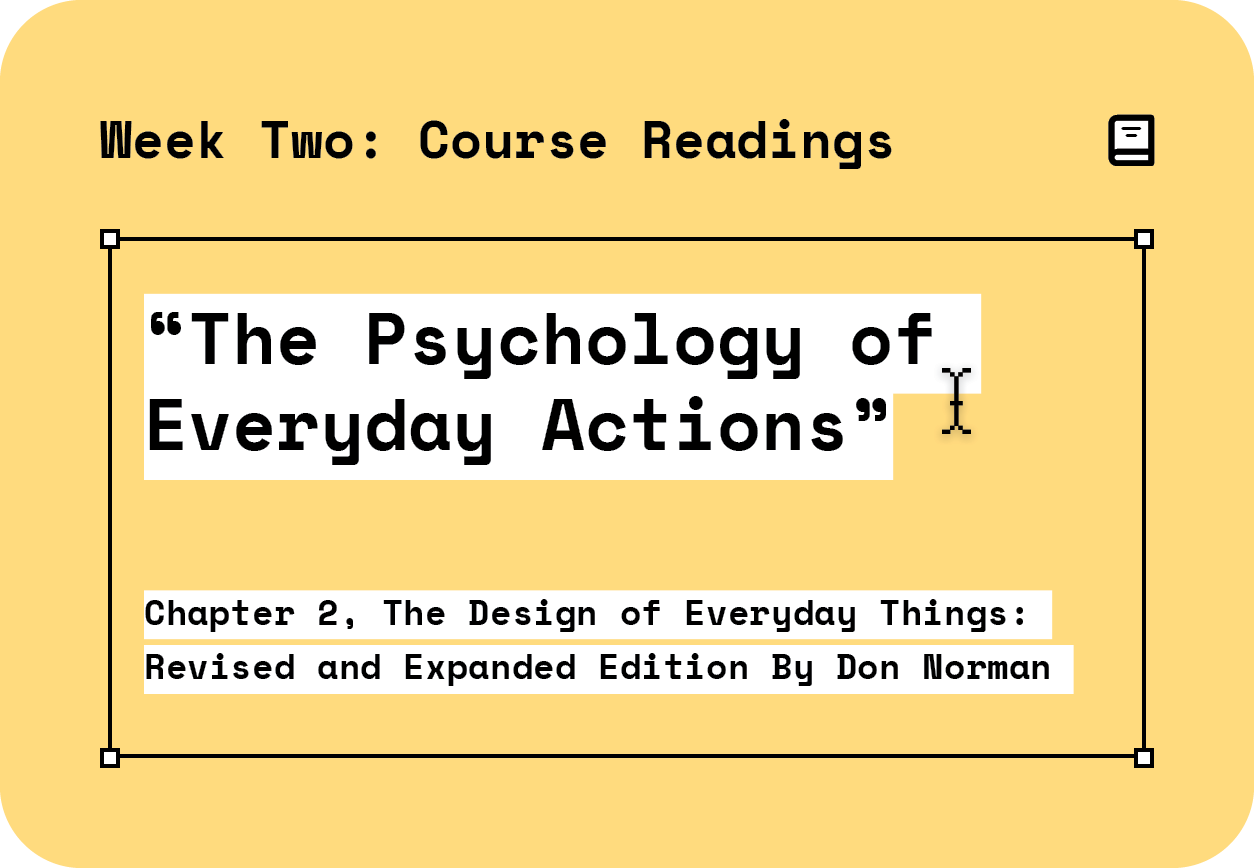In this chapter, Norman explores the need for understanding the underlying psychological patterns that underpin our actions in order to develop ‘good design’ experiences that consider the full-scope of the interaction. He does so by establishing a framework for understanding human interaction and then identifying key psychological tendencies that underpin human behaviour.
A framework for understanding human interaction: [hybridised from book] Feedforward and Feedback Cycles
Feedforward (Execution):How do I work this? What can I do? What do I want to accomplish?
1. Plan (Conscious Reflective action): What are the options?
2. Specify (Subconscious Behavioural action): What can I do?
3. Perform (Subconscious Visceral/Lizard brain action): How do I do it?
Feedback (Evaluation):What happened? Is this what I wanted?
3. Compare (Subconscious Visceral/Lizard Brain action): What happened?
2. Interpret (Subconscious Behavioural action): What does it mean?
1. Perceive (Conscious Reflective action): Is this okay?
This framework breaks down an interaction into distinct steps of action and response. It helps us understand how we interpret and perform tasks by first planning or action, choosing an action, and then performing an action; in response to our action, we then compare the feedback to what we expected, Interpret what the feedback means, and Perceive if this is what we wanted.
These actions are understood through the lens of ‘levels of processing’ which relates to our ability to have both conscious and subconscious thoughts that lead to action.
At the Visceral level we have subconscious actions that relate to instinct and our primal ‘Lizard Brain’, this is the most basic level of processing and allows us to act quickly in response to our environment. It is primarily learned by sensitisation and desensitisation through mechanisms as adaption and classical conditioning.
At the Behavioural level we have learned skills that can be triggered by situations that match them. Well-learned tasks at this level tend to be subconscious, oftentimes we’re aware of the actions while being unaware of the finer details (i.e. how exactly am I touch-typing this?). It is important for designer to know that at the behavioural level, every action is associated with an expectation that is verified in the feedback loop of evaluations – resulting in satisfaction/relief or disappointment/frustration.
At the Reflective level we have conscious thought where deep understanding develops and where reasoning and conscious decision-making takes place. It is the slowest of the processing levels as it is not subconscious. It often occurs after an event has happened, retrospectively evaluating the circumstances, actions and outcomes, often assigning blame or responsibility. It can also happen proactively in-anticipation of a future event, leading us to despair or excitement in response to what might happen. This level has the closest linked to emotional response.
As designers, we must design for all three levels as all work together in forming a product experience.
Human Psychological Tendencies
Story Telling –
Humans are innately predisposed to look for causation in response to events to form explanations and stories. We find them to be a persuasive medium for communicating ideas as they resonate with our past experiences and provide examples for future ones. Conceptual Models are a form of story we create to find explanations for the feedback we receive. Unfortunately however, we can sometimes form inaccurate stories in response to our own perceptions of events using our past experiences that don’t align with how something actually works. For this reason, its important provide accurate information about whats happening with a product.
Blame –
People often attribute blame in the wrong places. Our perception of the world is based on our point of view and as a result is limited in its scope in understanding the full extent of a situation. We tend to assign a casual relation whenever two things occur in succession, when they don’t occur when we expect them to, we similarly attribute blame. Often times, people blame themselves when something does work. For this reason its important to provide adequate feedback.

Chapter 6. Notes from Reading:
The Design of Everyday Things: Revised and Expanded Edition By Don Norman
